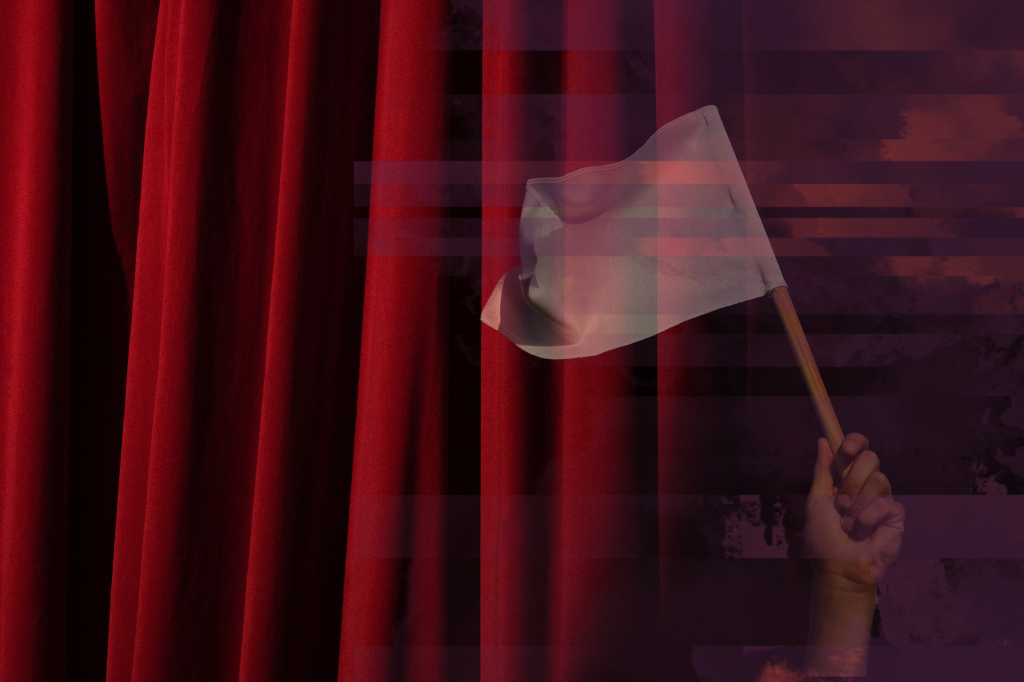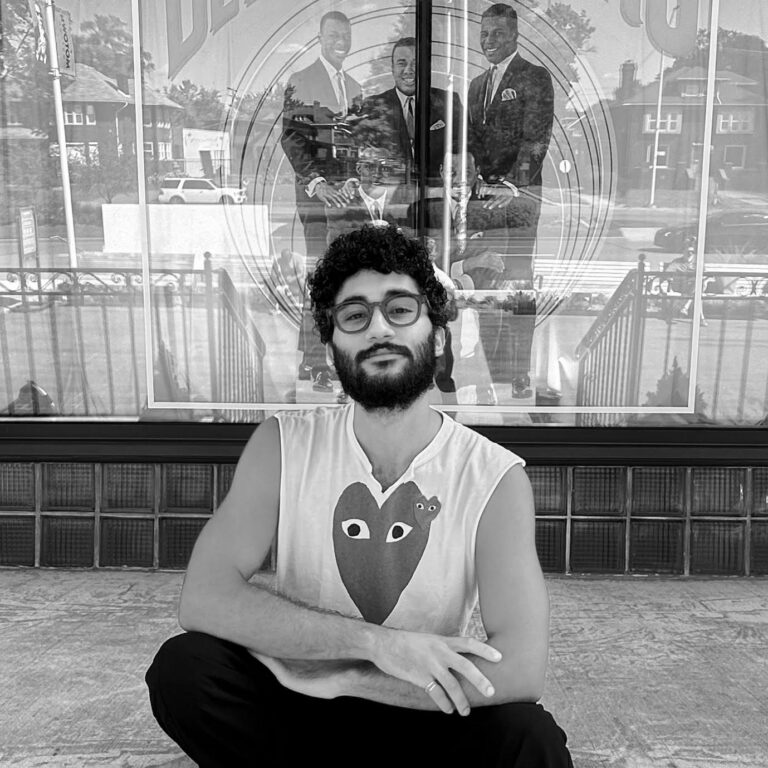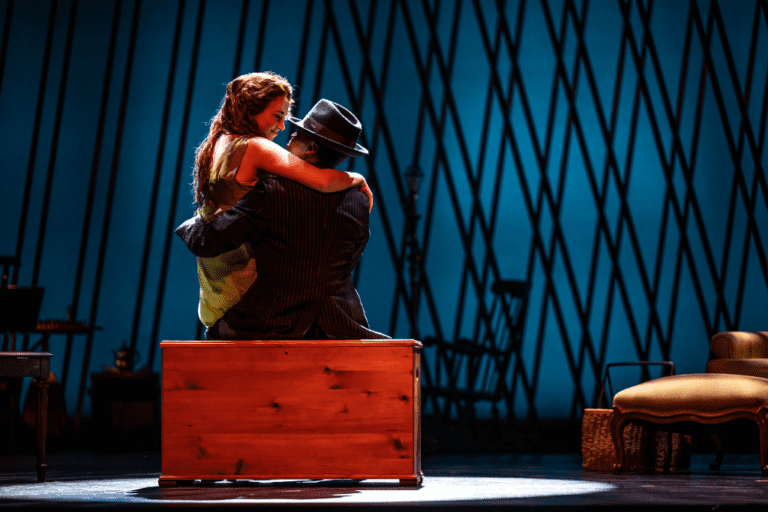In praise of ceasing: Taking breaks in theatre, life, and war
Unlike the theatre, life outside doesn’t adhere to a script — not even for intermissions.
In a chaotic world, the curtains rise and fall, and spontaneous applause weaves a narrative seemingly guided by an unsettled plot; the all-too-familiar logic of “the show must go on” dominates both onstage and off. Yet, that logic leaves little space for truce telling — a play on words where truce, synonymous with a ceasefire, becomes a poignant pun on “truth telling.” Such sentiment encourages the courageous ones to speak honestly and sincerely, paving the way for ending violence.
I write this at a time when indiscriminate Israeli-American bombs are, after a tenuous temporary pause, showering down on the people of Gaza, and, at the same time, the military in Sudan leaves millions displaced and seeking refuge. Innocent people are dying by weapons of mass destruction and orchestrated starvation. The global outcry for a permanent ceasefire in Gaza in the past several weeks resonates louder with each passing day. Grief looms large on the international stage, and many carry a heavy burden of sorrow.
The global outcry for a permanent ceasefire in Gaza in the past several weeks resonates louder with each passing day. Grief looms large on the international stage, and many carry a heavy burden of sorrow.
This moment demands a collective pause to grasp the magnitude of casualties, confront the heart-wrenching outcomes of war, and, most importantly, champion the cause of love, life, and freedom in the face of adversity. The urgency for truce telling is not a mere wish but a compelling demand that must be met without delay. It is more than a plea — a stubborn need for reflection and a commitment to forge a better present and future. Some may disregard it as mere naivete, but in truth, it’s a daring assertion of the sovereign self — a declaration that we, individuals and collectives, have the power to shape a world founded on principles of solidarity, care, and peace, a world in which one can break free from affliction.
Jaffa is my beloved hometown, which, despite a century-long history of Palestinian-Jewish cohabitation, continues to function as a de facto Jewish space, with “urban renewal” projects by and for Jews. There we, teens, took part in a theatrical initiative to promote a dialogue between Arab and Jewish youth. Our mission was to create a bilingual adaptation of Bernstein and Sondheim’s masterpiece, West Side Story, and highlight the importance of mutual respect and good neighbourliness between two rival groups — in this context, Palestinians and Israelis.
That stage was never just a place for scripted conflicts, but also a battleground for finding oneself and one’s home in the now 70-plus-year semi-colonial conflict.
As I observed life’s grand theatricality, I realized the importance of taking a moment to stop, reflect, and feel. As in the theatre, where relief follows tension, these moments of stepping in and out of reality — that of myself and that of the play — were turning points that helped me make sense of the world around me. So, just as I was starting to grapple with identity and belonging, I was cast in the role of Chino, a character that required me to play the devil’s advocate and reenact the tragic shooting of Tony. This scene turned out to be demanding, as gun violence incidents were daily tragedies in my childhood city, associated with fear and urinary incontinence. We toured with the production, performing two to three times a week. After every performance, I would rush out of character to reconnect with my inner sense of justice, leaving this “act” behind; I needed a break to refocus on my well-being and rest.
The practice of intermission — the cherished pause that functions as a concealed trap door that enables performances to halt momentarily — goes beyond mere logistical requirements such as scene changes.
The practice of intermission — the cherished pause that functions as a concealed trap door that enables performances to halt momentarily — goes beyond mere logistical requirements such as scene changes. Instead, it is a significant sociocultural ritual and serves a dramatic necessity. The intermission has a quasi-religious aura, compelling spectators to participate in the mise-en-scène without daring to disrupt the theatrical flow. Productions on Broadway and at the Stratford Festival, for example, regularly include intermissions, and televised events like the Oscar and Grammy Awards include commercial breaks, which function much like intermissions.
The universal anticipation of a break, especially a restroom break, has become as anticipated in a long-winded performance as the grand finale, providing audiences with the sacred opportunity to step away.
Now, while I’m usually not plagued by the dreaded “Broadway bladder,” there have been instances when even the most captivating performances had me torn between playing the part of Le Malade imaginaire (a la Molière) and answering nature’s undeniable call. Clinging to my program and dignity, I sat on the edge of my seat, refusing to let a toilet break deprive me of the performance’s catharsis. After all, the fate of the universe — or at least, the performance — was at stake. Relief came after, synonymous with a happy ending.
Originating in Renaissance court theatre, the intermission eventually evolved into a pivotal moment for spectators to “show off” their fashionable attire. Over time, this tradition transitioned to the grand foyers of esteemed institutions like the opera and the Comédie-Française during the nineteenth century. Classical dramaturgy not only adopted but sought to justify the intermission, assigning it a role in upholding the illusion of the performance. In the 1998 English edition of Dictionary of the Theatre, theatre scholar Patrice Pavis mentioned that “during the interval, the stage remains vacant; but the action continues off stage;” or, per the encyclopaedist Marmontel’s insight in 1763, “the intermission is a rest only for the spectators, not for the action. The characters are deemed to continue acting during the interval from one act to another.”
Just as the characters persist in their roles during the intermission, the concept of “freedom dreams,” as termed by Robin D.G. Kelley, a noted historian and professor of African-American studies, in 2002, becomes a continuous, transformative process for marginalized communities. Freedom dreaming as a concept was recently articulated in Michael R. Jackson’s thought-provoking musical A Strange Loop, which I saw its Broadway iteration in August 2022. The plot follows the journey of Usher, a “fat, queer Black playwright,” as he writes a play within a play within a play (or “a portrait of a portrait of a portrait,” as in the opening number, “intermission song”), each layer delving deeper into self-making and self-doubt. Usher’s introspective questions, epitomized in the query “Can I really write this?,” encapsulate the struggles experienced by many in the face of discrimination, limited opportunities, racism, queerphobia, and the diminishing of self.
Usher’s monologue gained increased relevance during the pandemic, particularly for Black communities. As Dionne Brand aptly noted in a 2020 Toronto Star article, the pandemic period has underscored a steady experience deeply rooted in structural anti-Blackness. Yet, A Strange Loop doesn’t claim to offer definitive solutions but immerses the audience in something profoundly elemental about humanity. Interestingly, the production runs for 1 hour and 40 minutes without an interval, intensifying the need for an intermission amid the urgency of it all.
Rest is not a luxury; it’s a vital act of survival, especially in a world grappling with racial injustice, the relentless challenges of structural pandemic, and pervasive violence and prejudice.
The call for intermissions must extend beyond the theatre into our daily lives, given their capacity to soothe the human mind. Rest is not a luxury; it’s a vital act of survival, especially in a world grappling with racial injustice, the relentless challenges of structural pandemic, and pervasive violence and prejudice. Tricia Hersey, the founder of The Nap Ministry, invites us in her 2022 manifesto, Rest is Resistance, to reflect on the significance of rest. Her framework reaches far beyond the simple act of taking naps; it is a deep commitment to personal liberation and healing. In a world where oppressive societal systems incessantly demand productivity, Hersey’s perspective on rest carries inherent political implications. She calls for the rejection of the oppressive forces of white supremacy and capitalism, both of which reduce human beings to mere instruments of labour, neglecting the essence of individuality. It also pays homage to the enslaved ancestors who were unjustly deprived of the freedom to dream.
With Hersey’s call in mind, let us remember that rest is not a passive undercurrent but a dynamic, transformative force demanding internal revolution. Rest humanizes, humbles, and grounds us. The boundless potential of rest evolves into an art form, an exchange, and a catalyst for dreaming. These are not mere luxuries but vital junctures to reconnect with ourselves and others with compassion and humility. Energy is a precious commodity, and preserving rest becomes an act of resilience and a renaissance for the human spirit in a world desperate to create new conditions for dreaming.










Comments